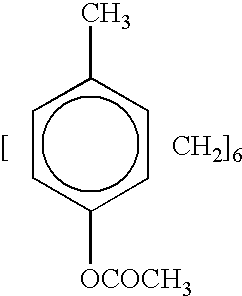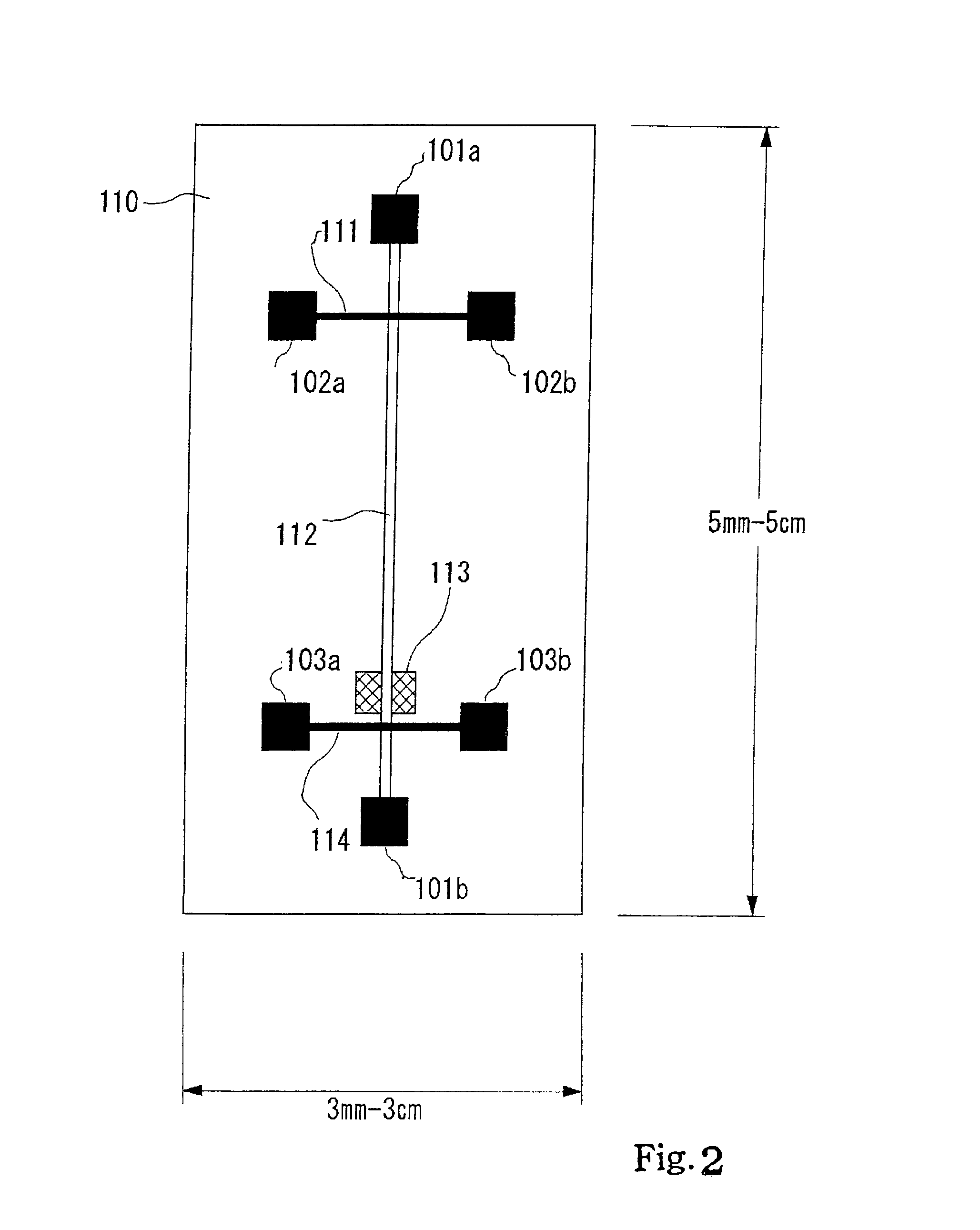Fractionating apparatus having colonies of pillars arranged in migration passage at interval and process for fabricating pillars
a technology of pillars and pillars, which is applied in the direction of isotope separation, diaphragms, electrolysis, etc., can solve the problems of large amount of sample required, long time required by researchers for fractionation, and inability to meet researchers' resolution
- Summary
- Abstract
- Description
- Claims
- Application Information
AI Technical Summary
Problems solved by technology
Method used
Image
Examples
first embodiment
[0107] First Embodiment
[0108] Referring first to FIG. 2 of the drawings, an apparatus embodying the present invention comprises a substrate 110 and a cover plate 801 (see FIGS. 3 and 4). Although a controller and a sample accelerator are further incorporated in the apparatus, they are not shown in FIG. 2.
[0109] The substrate 110 measures 5 millimeters to 5 centimeters by 3 millimeters to 3 centimeters. A fractionating passage 112 is formed in the substrate 110, and extends in the longitudinal direction. Though not shown in FIG. 1, pillars are formed in the fractionating passage 112. The pillars are designed to trap microstructures, i.e., molecules of a certain size. While a sample is migrated through the fractionating passage 112, the sample is fractionated into fractions different in size. Thus, the fractionating passage 112 partially serves as a fractionating region and partially as a path through which a sample is migrated.
[0110] Liquid sumps 101a and 101b are formed in the subst...
second embodiment
[0119] Second Embodiment
[0120] FIG. 5 shows another apparatus embodying the present invention. The apparatus implementing the second embodiment comprises a sample accelerator 10, a fractionating unit 20 and a controller 21. The fractionating unit 20 includes a substrate 20A and a cover plate 20B (see FIG. 6) as similar to that of the first embodiment. A fractionating passage 20a and a feed passage 19 are formed in the substrate 20A, and the fractionating passage 20a crosses the feed passage 19 at right angles. Pillars are formed in the fractionating passage 20a, and are designed to trap microstructures of a predetermined size thereinto. The pillars occupy an area of the fractionating passage 20a, and the remaining area serves as a path for large-sized microstructures. Openings 20c are formed in the cover plate, and are aligned with both end portions of the fractionating / feed passages 20a / 19. In this instance, the openings have a diameter of the order of 2 millimeters.
[0121] The samp...
third embodiment
[0130] Third Embodiment
[0131] FIG. 7 shows a major surface of a substrate forming a part of yet another apparatus embodying the present invention. In the apparatus implementing the third embodiment, sample is migrated with an assistance of the capillary phenomenon. The apparatus implementing the third embodiment comprises a sample accelerator 530 and a fractionating unit 550. The sample accelerator 530 accelerates sample through the capillary phenomenon.
[0132] The fractionating unit 550 includes a substrate 550a and a cover plate (not shown), and the sample accelerator 530 is built in the substrate 550a as will be described hereinafter in detail. A fractionating passage 540 and a quantitative passage 530a are formed in the substrate 550a, and are open on the major surface of the substrate 550a. Pillars are formed in the fractionating passage 540, and are hereinbelow referred to as "fractionating pillars". The fractionating passage 540 extends in the longitudinal direction of the sub...
PUM
| Property | Measurement | Unit |
|---|---|---|
| width | aaaaa | aaaaa |
| width | aaaaa | aaaaa |
| width | aaaaa | aaaaa |
Abstract
Description
Claims
Application Information
 Login to View More
Login to View More - R&D
- Intellectual Property
- Life Sciences
- Materials
- Tech Scout
- Unparalleled Data Quality
- Higher Quality Content
- 60% Fewer Hallucinations
Browse by: Latest US Patents, China's latest patents, Technical Efficacy Thesaurus, Application Domain, Technology Topic, Popular Technical Reports.
© 2025 PatSnap. All rights reserved.Legal|Privacy policy|Modern Slavery Act Transparency Statement|Sitemap|About US| Contact US: help@patsnap.com



